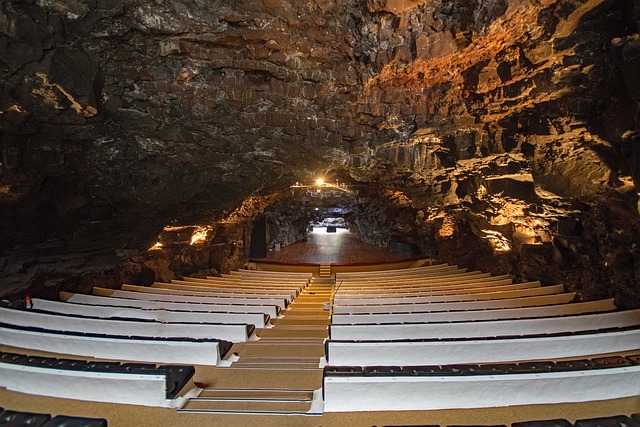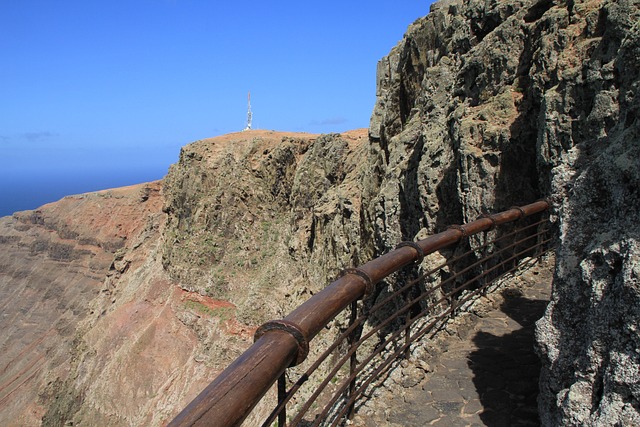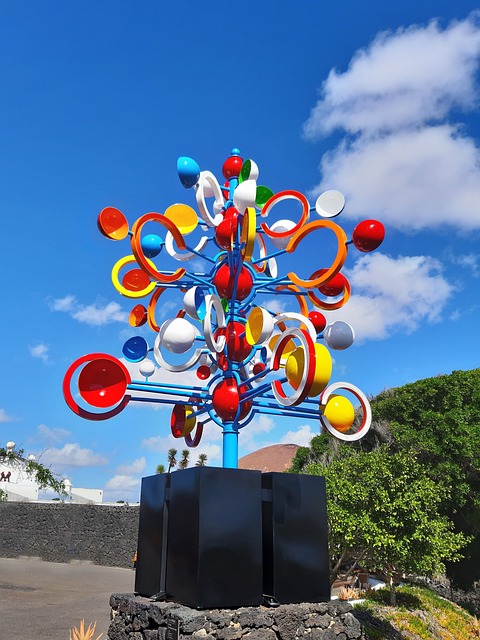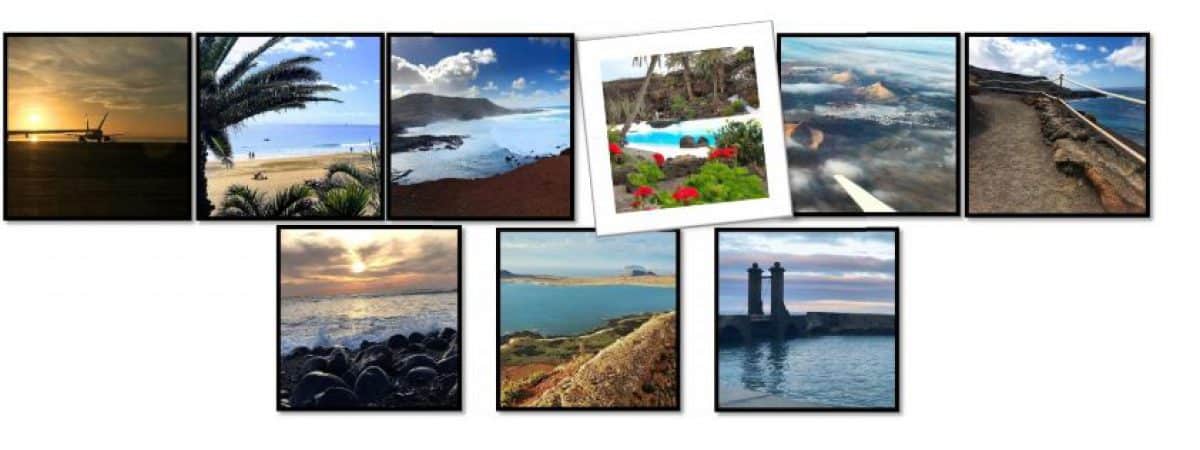This post is also available in:  Español (Spanish)
Español (Spanish)

We invite you to discover the works of César Manrique in Lanzarote. This artist and architect highlighted the natural characteristics of the island in each of his works. He also became a reference in the art scene throughout the Canary Islands.
Works of César Manrique in Lanzarote
If you are planning a trip to Lanzarote, here are some of Manrique’s works that you must visit. In each of these places, you will see the unmistakable mark of this local artist.
Jameos del Agua
It stands out as Manrique’s first intervention in Lanzarote. It is a tourist and cultural complex located inside a volcanic tube on the northern coast of the island. The space is a perfect example of how the artist integrated architecture with the unique natural environment of the island.
The complex is located within the volcanic tube formed by the eruption of the Volcano de La Corona. It includes an auditorium, a restaurant, a palm tree garden, and a natural swimming pool, all integrated into the volcanic environment.
One of the highlights of Jameos del Agua is its natural pool, known as the “Jameos Lake”. This lake is home to a unique species of albino crab known as “jameito”, which is endemic to Lanzarote.

Mirador del Río
Mirador del Río is another clear example of how the architect integrated nature into his works. So much, that the place blends in with the rest of the landscape. It is located in the north of Lanzarote, on top of the Famara cliffs.
The views from the lookout point are breathtaking. From there, you can see the El Río Strait and the island of La Graciosa.
The architectural structure of Mirador del Río harmoniously blends into Lanzarote’s volcanic landscape. Manrique took advantage of a natural cave for its construction, featuring a stone facade and a terrace with panoramic views.
It has the minimalist design and sustainability focus that are distinctive characteristics of Manrique’s style.
Cactus Garden
The Cactus Garden is said to be Manrique’s favourite work, so you must include it in your Lanzarote excursions. It is a botanical garden located in the municipality of Guatiza.
The garden is a showcase of Manrique’s passion for nature conservation, as well as his ability to create spaces that merge art, architecture, and the natural environment.
You will find a wide variety of cacti and succulents from different parts of the world. The plants are spread out on terraced platforms and volcanic lava structures, creating a fascinating visual contrast.
Additionally, there is a restored old mill that now functions as a coffee shop and a souvenir shop.
César Manrique Organization
The César Manrique Organization is a cultural centre and museum dedicated to Manrique’s artistic and architectural legacy. It is located in the artist’s former home and studio in Lanzarote and is a landmark for those interested in appreciating his work.
Manrique designed the space, which is an example of the harmonious integration between architecture and the natural landscape. It includes volcanic elements such as stone and lava, combined with open spaces and landscaped courtyards, creating a tranquil atmosphere.
Inside the organization, there is an extensive collection of art and Manrique’s works. Visitors can explore the different rooms and spaces, immersing themselves in the artist’s creative world and understanding his vision of the relationship between art and nature.
El Diablo Restaurant
This is one of César Manrique’s works in Lanzarote that should not be missed on your itinerary. It is the El Diablo Restaurant, located inside the Timanfaya National Park.
The restaurant offers a unique culinary experience combined with astonishing architecture and an impressive volcanic setting.
The most distinctive feature of the restaurant is its cooking method. They use the geothermal heat from volcanic eruptions to cook the food. The dishes are prepared on grills placed over openings in the ground, where the natural heat from the earth and volcanic rocks allows for the cooking of the food.

Wind Toys
The Wind Toys are a series of sculptures created by Manrique and can be found in various locations in Lanzarote. They are also known as “Winds of Lanzarote” and represent one of the distinctive features of his artistic legacy.
These works are composed of metal structures that interact with the wind, creating subtle and harmonious movements. Each Wind Toy is a unique design with abstract shapes that capture the essence of Lanzarote’s volcanic landscape.
In addition to being an artistic manifestation, they also serve a practical function. These sculptures act as giant weathervanes indicating the direction and intensity of the wind blowing on the island.
Some Wind Toys are located in Arrieta, at the roundabout of Avenida de las Playas in Puerto del Carmen, in Tahíche, among other places.
Casa-Museo del Campesino
It is a cultural space dedicated to honouring and preserving the traditional culture and agricultural traditions of the island. The Casa-Museo is a tribute to the history and life of Lanzarote’s peasants.
The building of the Casa-Museo combines traditional architecture with contemporary elements. The whitewashed walls, wooden ceilings, and landscaped courtyards represent the typical architecture of the island, while Manrique’s sculptures and artistic elements add a modern touch.
Importance of César Manrique in Lanzarote
Manrique was an architect and artist, born in Arrecife in 1919. He was an architect, sculptor, and painter. After studying both in Spain and abroad, he returned to Lanzarote, where he created his most iconic works.
Manrique’s influence can be seen throughout the island. His passion for nature and his interest in its preservation are evident in his works. The main characteristic of his works was how he integrated nature and sculpture, adding a creative and modern touch to each space.
When searching for things to do in Lanzarote, you will always come across some of César Manrique’s works. Are you familiar with them? Which one is your favourite?
This post is also available in:  Español (Spanish)
Español (Spanish)
